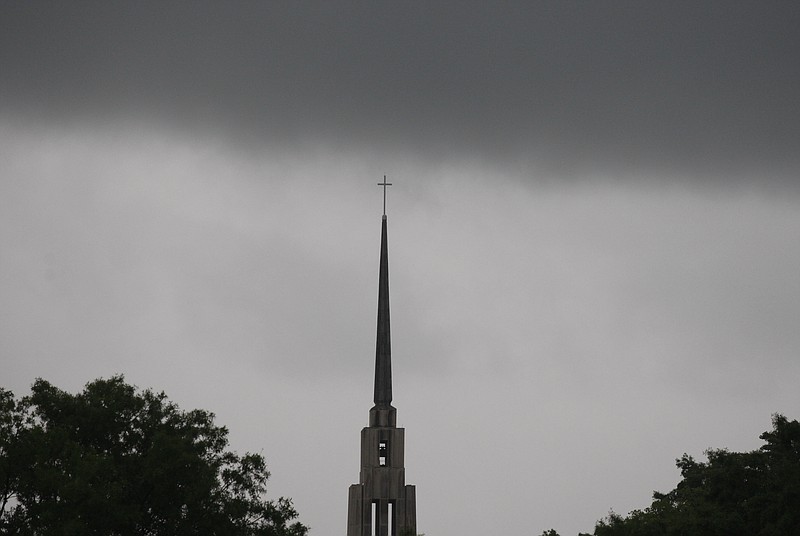The average Chattanooga resident probably won't think twice about having to pay another $5 a month for electricity after EPB announced a recent 3.5 percent rate hike.
The agency's board of directors unanimously approved the hike at an early morning board meeting, and no one there from the public had anything to say in opposition.
EPB Chief Executive Officer Harold DePriest said the increase was the utility's first since 2011, and most Chattanooga residents likely would have written off the hike as the utility's price of doing business.
Indeed, if DePriest had said just that, with the usual corporate-speak about the cost of new equipment, keeping things up to date to better serve customers and the like, it might have generated little notice.
But the increase, DePriest said, was fueled by extreme weather, hotter summers and colder winters, both of which he said produce bigger storms.
Data supplied by the National Oceanic & Atmospheric Administration, the United States government's climatological information agency, doesn't bear out his assertion.
In the four winters since EPB's last rate increase, four out of five Decembers have been warmer than average, three out of five Januarys have been colder than average and three out of five Februarys have been warmer than average.
Three out of four Junes have been warmer than average, two out of four Julys have been warmer than average but only one out of four Augusts have been warmer than average.
At the time of the previous rate increase of 5 percent, which took affect on July 1, 2011, following the previous April's deadly tornadoes, DePriest said the increase should last five to eight years, providing there were no record-setting storms.
Hamilton County experienced another costly tornado in 2012 but none since then. Snowfall totals have been less than historical averages in two of the four winters since the increase, but the winters where snowfall exceeded the historical averages (8.4 inches in 2014 and 9.5 inches in 2015) were hardly record setters.
EPB spent $26 million repairing storm damage following the 2011 tornado, according to DePriest, but the Federal Emergency Management Agency reimbursed much of that. In 2011, EPB board chairman Joe Ferguson said FEMA was likely to reimburse 75 percent.
In actuality, utility officials said last week, the recent damage caused by a variety of storms, from severe thunderstorms to snow storms to wind storms, is the culprit for the rate increase.
"The cost of repairing and keeping the system operational has tripled [since 2011]," said J.Ed. Marston, EPB's vice president of marketing. "The Smart Grid has helped us be out for a much briefer time [so] people don't realize how damaging some of the storms were."
What had been a five-year average annual cost of repair of $2 million, he said, grew to $3.6 million, then $6.3 million. In fact, a rate increase might have come sooner, he said, had EPB not received an infusion of $23 million from its fiber-optics system.
In the board meeting, DePriest also pointed to large monthly fluctuations in temperature for the recent rate hike. Again, data doesn't back him up.
In the four years since the last rate increase, the monthly fluctuations in temperature in the most extreme summer months of June-August and the most extreme winter months of December-February have differed little from those over the last 50 years when tested against the extreme months of August and January in five-year increments since 1964.
Temperature swings in the summer months since the last rate increase have averaged 36 degrees compared to 36.18 degrees over the five-year August increments since 1964. In the winter months, temperature fluctuations since the last rate increase have averaged 50.67 degrees compared to 56.47 over the five-year January increments since 1964.
So Scenic City summers actually are not hotter, nor winters colder.
EPB officials said DePriest was referring to days when temperature swings cause a higher peak demand charge that the Tennessee Valley Authority now requires the distributor to pay. The relatively recent charge, according to Marston, "is a snapshot each month at a point of time when our system is using the most power," when it moves from using TVA's least expensive energy to its most expensive energy.
That charge, according to EPB Chief Financial Officer Greg Eaves, cost EPB $6.6 million more than it budgeted for power in fiscal 2014 and $12.5 million more than it budgeted in fiscal 2015 (with June yet unreported).
Too often today, words like "extreme weather," "climate change" and its now-out of vogue predecessor "global warming" are thrown around to describe any weather or reason for taking a particular action - like a rate hike.
EPB's recent rate increase is, indeed, climate related but should have been explained more clearly as the result of storm damage costs and supplier charges than extreme weather.
